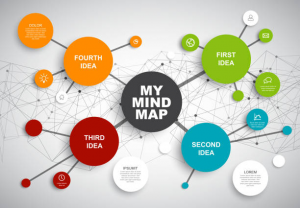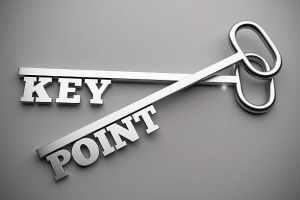
[iStock]
During the examination period, one of the most important resources for students is revision notes.
Often found in the form of flashcards, notebooks or worksheets, these notes contain precious information and key points that students use, either for homework revision or to study for the exams.
But note-taking is a skill that some students still can’t quite master. So as tutors, we need to help our students to create revision notes that they can utilise adequately.
Here are some ways you can help your student with creating notes for their revision.
Tell Students What To Record

[Depositphotos]
In note-taking, there are certain key points or information that students should record, so you should tell them or let them know. Some tutors might think that this is spoon-feeding our students but trust me, it is not.
It is just bringing their attention to a certain point and highlighting them to make note-taking easier because some students might struggle with identifying the key points.
You can do this by using signalling phrases like “”this is important,…”, “you’ll want to remember,…” or “you might want to take note of these points”.
Get Students to Think of Examples

[Adobe Stock]
One thing that students often leave out in their note-taking is examples. Having examples in your students’ notes are useful to them in understanding certain key points and it also shows students how they can apply a certain method or concept to a question.
To encourage this, get your students to think of examples during the lesson first, then get them to write them down in their notes. After that, make sure you review it just to make sure the examples are relevant and use the concepts properly.
This is a great way to test their knowledge and understanding of the topic too and who knows? Maybe one of their examples is a groundbreaking idea that they can fully develop into a counterargument or suggestion in their exams!
Train Students to Take Better Notes

[Theory of Algorithms]
Give a man a fish and you feed him for a day, teach a man how to fish and you feed him for a lifetime. This saying applies to your students, so instead of creating revision notes for them, teach them to write better notes!
Here’s how you do it:
1. Teach them to include diagrams in their notes
2. Teach them to write in bullet points
3. Teach them to highlight key information and points
4. Teach them to use short forms or contractions to make note-taking quick and easy
Once your student gets the hang of writing better notes, they become accustomed to writing useful revision notes that they can use for their exam preparation. They also gain a lifelong skill that will help them in the future.
Use Thought Patterns and Frameworks

[iStock]
Another way we can help our students with taking notes is to encourage them to use thought patterns and frameworks.
Thought patterns and frameworks are easy for students to use because all they need to do is pluck in information and key points into a diagram or table. Here are some thought patterns and frameworks that you can teach your student to use:
1. Mindmaps
2. Tables
3. The outline method
4. Flow Notes
5. Two-column note-taking
This makes it easier for them to remember key points, and it is a quick and easy method to note-taking. This is because it lays all the information out on a spreadsheet and shows how the different points are connected, showing the association between points.
Make Time for Note Taking Activities

[iStock]
During lessons, you might find that your student struggles to keep up with taking notes, especially if you cover a lot of content in a topic or go through it too quickly.
So give your student time to take notes after you cover a certain section or page. This might be easier in one-to-one tuition than in group tuition, so if you teach group tuition, just be more aware and look out for students who can’t keep up.
This also serves as a break for your student to consolidate and absorb the information taught.
Review Each Topic Before Moving On

[iStock]
Missing out on information during note-taking is normal. Sometimes, students can’t keep up, are absent or need further clarification. Before you move on to the next topic, just review the previous one!
All you need to do is summarise the key points and elaborate on the points a little. Branch them out into sub-points and if you can, get your students to add in information too!
This way, you get students to actively participate during your lesson, and it encourages them to try to remember what they have learnt. Something like a memory jolt for them.
Conclusion

[Unsplash]
Creating simple and easy to understand revision notes is crucial for our students’ success. After all, these notes are what students refer to, to help them better understand the topics and the contents tested in examinations.
I hope this article shows you how you can help your student create useful notes that they can utilise for their exams. Good luck!
You can download revision notes in the links below:
